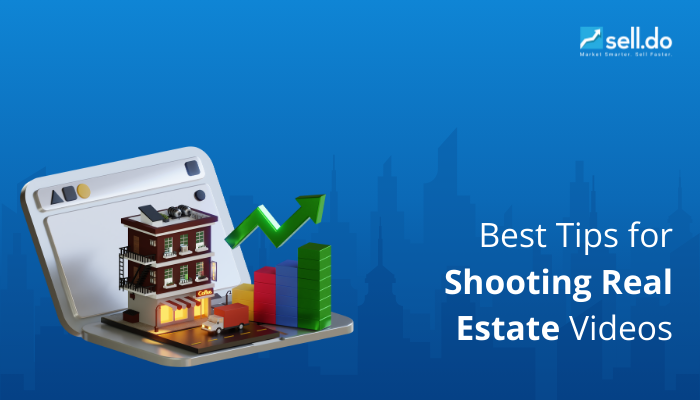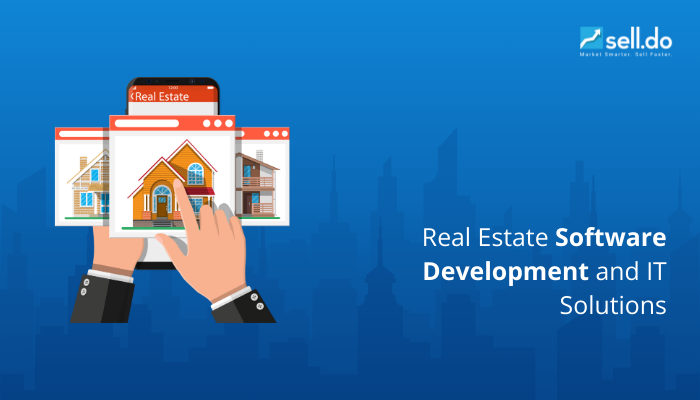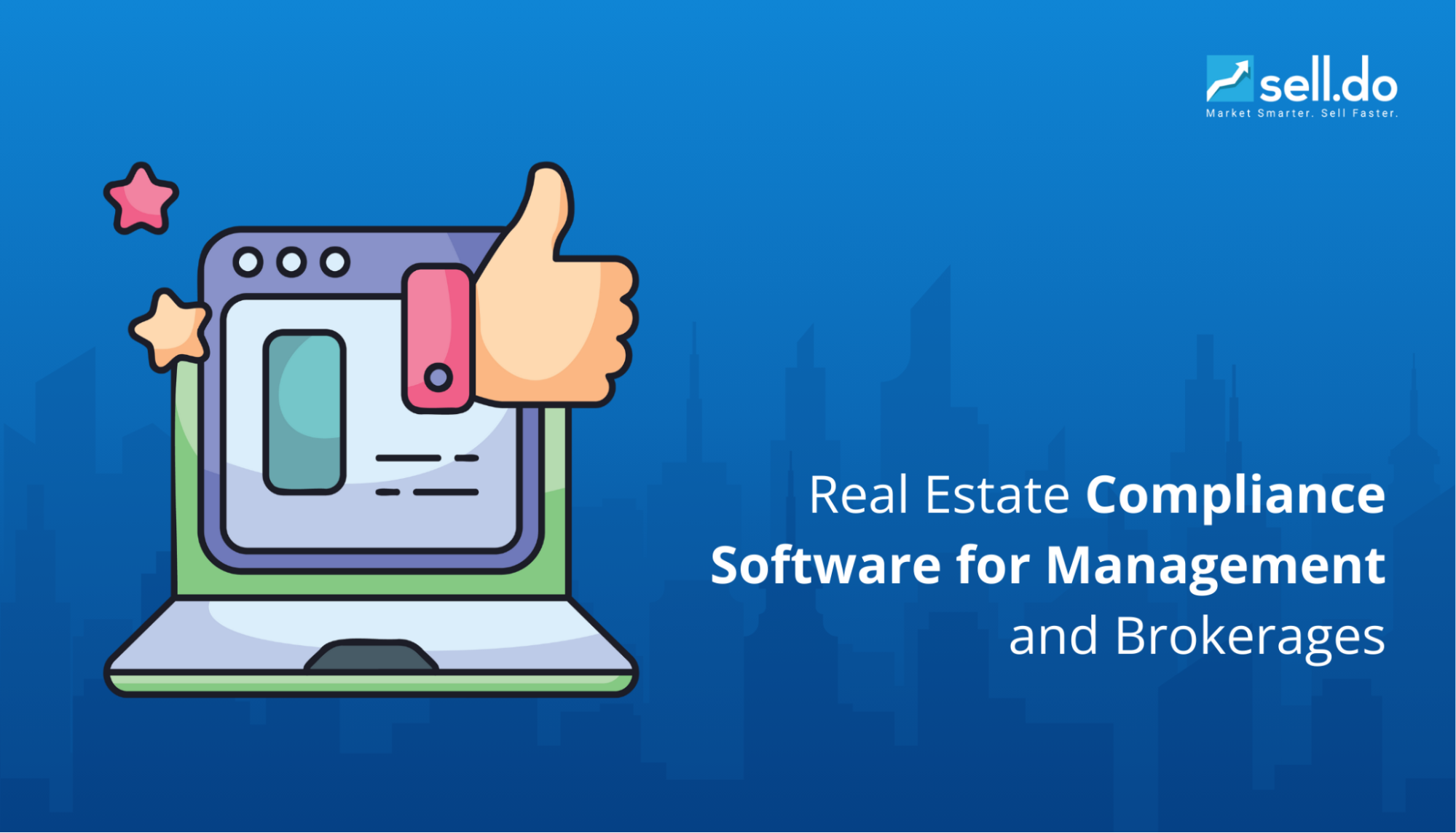How to Stage a Property for the Best Video for Real Estate?
To make your video for real estate truly compelling, you need to focus on more than just beautiful shots. The right preparation, staging, lighting, and shot organization can elevate your content from a simple property walkthrough to a powerful sales tool. A well-staged property can increase perceived value, leading to faster sales and higher offers. For real estate developers and brokers, this is crucial. Your CRM can help you track the impact of staging on your sales, providing data to refine your strategies. This section will show you how to stage a property for the best real estate videos that engage potential buyers and help you close deals faster.-
Preparing the Property for a Video for Real Estate
A successful video for real estate starts with a meticulously prepared property. Cleaning, decluttering, and staging are foundational steps to ensure that every scene you capture looks inviting and sells the lifestyle your buyers are looking for.- Deep Cleaning: Ensure every surface, window, and floor is spotless. Dust, fingerprints, and smudges can detract from the overall impression and distract viewers from the home's features.
- Decluttering: Remove unnecessary items to create a clean, open space. Buyers need to imagine their belongings in the home, so clear countertops, remove personal photos and minimize excess furniture.
- Staging: Arrange furniture to showcase each room’s functionality and flow. Use neutral colors and simple decor to appeal to a broader audience. Consider adding elements like fresh flowers, tasteful artwork, or even a few strategically placed lifestyle props to create a warm, welcoming environment.
-
Lighting: Mastering Light for Your Video for Real Estate
Lighting can make or break your real estate video. It is crucial to ensure the property looks bright, inviting, and accurately represented.- Utilize Natural Light: Whenever possible, use natural light to your advantage. Shoot during the day, ideally in the morning or late afternoon, when the light is soft and flattering. Open all curtains and blinds to let in as much natural light as possible, giving the space a warm and welcoming feel.
- Supplement with Artificial Light: While natural light is ideal, it isn’t always enough. Use soft, diffused artificial lighting to ensure even coverage throughout each room. Avoid harsh overhead lighting that can cast shadows. Instead, use floor lamps, table lamps, or LED panels to add depth and dimension to your shots.
-
Organizing a Shot List for a Seamless Video for Real Estate
A well-organized shot list is essential for creating a real estate video that feels cohesive and engaging. It ensures that you capture all the important features while maintaining a natural flow throughout the property.- Begin with Wide Shots: Start with wide shots of each room to give viewers a sense of scale and layout. These shots establish the property’s overall flow and help potential buyers understand how each space connects.
- Move to Detail Shots: Follow up with medium and close-up shots that focus on specific selling points — a beautifully tiled backsplash, elegant light fixtures, or custom cabinetry. These details add texture and richness to your video, making it more memorable.
- Create a Logical Flow: Arrange your shots in a sequence that mimics a natural walkthrough of the property. Start at the entrance, move through the main living areas, and finish with outdoor spaces. This logical flow helps viewers mentally map out the space.
- Capture Additional B-Roll: Don’t forget to capture extra footage (B-roll) of unique features, neighborhood amenities, or the surrounding landscape. These clips can add context and help keep viewers engaged throughout the video.
Top 4 Tips for Choosing the Right Equipment for Your Video for Real Estate
 Creating a standout video for real estate requires choosing the right equipment to capture high-quality visuals and audio. The right tools will help you highlight the property's best features, create a polished final product, and engage potential buyers more effectively.
Let’s break down the essential equipment, from cameras and lenses to stabilizers and microphones, to elevate your real estate videos.
Creating a standout video for real estate requires choosing the right equipment to capture high-quality visuals and audio. The right tools will help you highlight the property's best features, create a polished final product, and engage potential buyers more effectively.
Let’s break down the essential equipment, from cameras and lenses to stabilizers and microphones, to elevate your real estate videos.
-
Cameras: DSLR, Mirrorless, and Smartphone Options
Choosing the right camera is the first step in creating an engaging video for real estate. Each type of camera offers different benefits depending on your shooting style and budget.Camera Type Benefits Recommended Models DSLR Cameras High resolution, excellent low-light performance, interchangeable lenses for versatility Canon EOS 5D Mark IV, Nikon D850 Mirrorless Cameras Lightweight, compact, fast autofocus, better video stabilization Sony A7 III, Panasonic GH5 Smartphone Cameras Portable, budget-friendly, advanced features like 4K video and image stabilization iPhone 14 Pro, Samsung Galaxy S23 Ultra
-
Lenses: Wide-Angle for Interior Shots
The right lens will help you capture each space's full beauty and scale. Wide-angle lenses are particularly effective for real estate videos, providing a broader view and making rooms appear larger.- Wide-Angle Lenses: These are ideal for interior shots, capturing more of the room in a single frame. For the best results, use lenses between 16mm and 35mm.
- Prime Lenses: These lenses offer sharper images and better low-light performance, ideal for detailed shots in dimly lit interiors.
- Smartphone Lenses: These use external clip-on wide-angle lenses, like those from Moment, to expand the field of view beyond your phone's default capabilities.
-
Stabilizers: Tripods, Gimbals, and Sliders
Stable footage is essential for creating a professional video for real estate. The right stabilizing equipment will keep your shots smooth and your viewers focused on the property.Stabilizer Type Purpose Recommended Models Tripods Keep the camera steady for static shots, panning, or tilting Manfrotto MVH502AH Gimbals Provide fluid motion for dynamic walkthroughs and exteriors DJI Ronin-S, Zhiyun Crane 3S, DJI OM 5 Sliders Add cinematic motion to shots, enhancing depth and interest Edelkrone SliderONE, Rhino ROV Pro
-
Audio Equipment: Microphones for Clear Sound
Clear audio is as important as high-quality visuals in a real estate video. The right microphone can make your video sound professional and engaging.- Shotgun Microphones: Capture clear, directional audio while minimizing background noise.
- Lavalier Microphones: Ideal for capturing voices during walkthroughs or interviews.
- External Recorders: Provide enhanced control over sound levels and clarity.
What are the Optimal Shooting Techniques for a Video for Real Estate?
Creating a high-quality video for real estate requires not only the right equipment but also mastery of shooting techniques. Proper camera settings, composition, and movement are key to capturing the best angles and features of a property, making your video both professional and captivating. Here’s how you can optimize your shooting techniques to produce engaging real estate videos.-
Camera Settings: Resolution, Frame Rate, and Exposure
Your camera settings will significantly impact the quality and clarity of your real estate video. Understanding how to adjust resolution, frame rate, and exposure settings is essential to creating footage that looks sharp and vibrant. Here is a table explaining this in detail.Setting Guideline Purpose Resolution - Shoot in 1080p Full HD
- Aim for 4K UHD for better detail and flexibility in editing.
Ensures sharp, professional-quality video. Frame Rate - Use 24-30 fps for a natural look
- 60 fps for smoother motion or slow-motion effects.
Provides realistic or fluid motion as needed. Exposure - Balance exposure to avoid extremes; keep ISO at 100-400
- Adjust the aperture and shutter speed appropriately.
Maintains clarity and detail in varying light conditions.
-
Composition Techniques: Rule of Thirds and Leading Lines
Composition is critical to making a property look inviting and spacious in a video. Good composition techniques help guide the viewer’s eye to key features and create a balanced, aesthetically pleasing shot.- Rule of Thirds: Divide your frame into nine equal parts with two horizontal and two vertical lines. Position key elements, like a beautiful fireplace or a piece of artwork, along these lines or their intersections to create a more balanced and engaging shot.
- Leading Lines: Use architectural lines, like staircases, hallways, or countertops, to lead the viewer's eye to the focal point of the scene. Leading lines create depth and guide the viewer through the space naturally.
- Framing: Use natural frames, like windows or doorways, to highlight certain parts of the property. Framing adds depth and draws attention to specific details or views.
-
Movement: Panning, Tilting, and Tracking Shots
Dynamic camera movements add interest and flow to your video for real estate. Incorporating different types of movement can help showcase the property's layout and create a sense of space.Movement Type Description Use Case Panning Horizontal camera movement from left to right (or vice versa) to reveal a room or highlight a feature. Ideal for capturing wide spaces like living rooms or backyards. Tilting Vertical movement of the camera up or down to show high ceilings or architectural details. Perfect for highlighting height, like tall windows or staircases. Tracking Shots Moving the camera along with a subject or through space, often using a gimbal or slider. Great for walkthroughs, following a path, or guiding viewers through a property.
-
Establishing Shots vs. Detailed Shots
Combining wide establishing shots with close-up detail shots provides a comprehensive view of the property, helping to engage and inform potential buyers.- Establishing Shots: Start with wide, sweeping shots that capture the entire space or property. These shots help viewers understand the layout and size of the home. Use a drone to capture aerial shots of the property and its surroundings, providing context and a sense of location.
- Detailed Shots: Follow up with close-ups of key features like unique fixtures, premium materials, or high-end appliances. Detailed shots add texture and depth to your video, highlighting the property's unique selling points and enhancing its perceived value.
How to Highlight Key Property Features?
Creating an effective video for real estate goes beyond just shooting; it’s about capturing what makes a property unique and editing it in a way that tells a compelling story. Here’s how you can make your real estate videos stand out and drive more inquiries.- Focal Points: Unique Architectural Elements
Capture unique architectural features, such as vaulted ceilings, exposed beams, or custom moldings. Use close-up shots and slow pans to emphasize these elements, showing off the craftsmanship and adding character to your video. - Amenities: Pools, Gyms, and Other Highlights
Showcase standout amenities like pools, gyms, or home theaters that add luxury and convenience. Use dynamic shots, like tracking or drone footage, to give viewers a sense of scale and the full experience these features offer. - Capturing Outdoor Areas: Gardens, Patios, and Views
Don’t neglect the outdoor spaces. Highlight gardens, patios, and scenic views with wide-angle shots and smooth pans. Use aerial shots to capture the property’s landscape, surroundings, and views, giving a sense of privacy or community. - Telling a Story Through Visuals
Create a narrative flow that takes viewers on a journey through the property. Start with the most striking exterior shots, move through the main living areas, and finish with a unique feature or breathtaking view. Each shot should build on the last, creating an emotional connection and compelling the viewer to learn more.
How to Master Post-Production for an Engaging Video for Real Estate?
Once you’ve captured the footage, the magic happens in post-production. Here’s how to polish your video for real estate to perfection.| Post-Production Element | Description | Recommended Tools |
| Editing Software | Choose user-friendly software that meets your needs, from professional options like Adobe Premiere or Final Cut Pro to mobile apps like LumaFusion. | Adobe Premiere Pro, Final Cut Pro, LumaFusion |
| Color Correction and Grading | Adjust the colors to make each shot look natural and appealing. Color grading creates a consistent mood that enhances the property’s appeal. | Built-in tools in editing software, LUTs for grading |
| Background Music and Sound Effects | Add background music to set the tone and sound effects to highlight certain features. Choose music that complements the property's style — upbeat for modern homes, classical for luxury estates. | Epidemic Sound, Artlist for music licensing |
| Utilizing Text and Graphics | Use text overlays to emphasize key points, like "Newly Renovated Kitchen" or "Spectacular Ocean Views." Incorporate your branding and contact info to keep the video informative and professional. | Built-in text tools in software, motion graphics templates |
Transform your real estate business :
Sell.Do Real Estate CRM integrates marketing, sales, and automation seamlessly in one dynamic platform designed to maximize efficiency and drive growth.
Tips to Optimize Your Real Estate Video for Every Platform
To maximize the reach and impact of your video for real estate, you need to optimize it for different platforms. From adjusting the format for social media to applying SEO techniques and engaging with viewers, each step is crucial to ensuring your video reaches the right audience and drives results.-
Adjusting Format for Social Media: Landscape vs. Portrait
Different platforms have different format preferences, and optimizing your video format is key to maximizing visibility and engagement.- Landscape (16:9): Ideal for YouTube, Facebook, and real estate websites
- Portrait (9:16): Best for Instagram Stories, Reels, and TikTok
-
SEO Techniques: Titles, Descriptions, and Tags
Search Engine Optimization (SEO) can significantly increase the visibility of your video for real estate on platforms like YouTube, Google, and even social media.- Titles: Craft compelling, keyword-rich titles like “Modern 3-Bedroom Home with Ocean Views in Miami.” Be specific and use terms potential buyers are likely to search for, such as the property's type, key features, and location.
- Descriptions: Write detailed descriptions that provide additional context. Include relevant keywords, property highlights, and a call to action, such as "Contact us for a private tour." Use the first 150 characters wisely, as this is what appears in search results.
- Tags: Use relevant tags to help algorithms understand and categorize your content. Include variations of keywords, such as “real estate video,” “Miami home for sale,” or “luxury property tour.”
-
Sharing on Real Estate Websites and Listings
Your video for real estate should be prominently featured on real estate websites and listings where buyers are actively searching.- MLS and Real Estate Portals: Upload your video to the Multiple Listing Service (MLS) and other major real estate portals like Zillow, Realtor.com, and Redfin. Videos increase listing engagement and help properties stand out.
- Company Website: Embed the video on your website’s property pages to enhance user experience and improve SEO. Videos can increase the time visitors spend on your site, which positively impacts your search rankings.
- Email Marketing: Include your video in email marketing campaigns to showcase new listings or updates. Use engaging thumbnails and brief descriptions to encourage clicks and views.
-
Engaging with Viewers: Comments and Calls to Action
Engagement is critical for keeping viewers interested and driving action. Encourage viewers to interact with your video content and make it easy for them to take the next step.- Comments: Monitor and respond to comments promptly. Engaging with viewers shows you’re attentive and willing to provide additional information, fostering trust and interest.
- Calls to Action (CTAs): Include clear CTAs in your videos, such as "Schedule a Viewing," "Contact Us for More Info," or "Subscribe for More Property Tours." Use end screens, overlays, or even in-video text to direct viewers on what to do next.
- Interactive Elements: Utilize interactive elements like polls, questions, or clickable links to keep viewers engaged and encourage them to learn more about the property.
Top 3 Tips for Creating High-Impact Video for Real Estate
Producing real estate videos that captivate and convert requires more than just pointing a camera. Your videos must be strategically planned, well-shot, and carefully optimized for different platforms to stand out in a crowded market. Here are some practical tips to help you create real estate videos that attract and engage potential buyers.- Plan Your Shots: Outline a shot list that covers all key features of the property, from exterior views to interior highlights, ensuring a smooth, comprehensive video that flows naturally.
- Keep Videos Short and Engaging: Aim for 2-—to 3-minute videos that get straight to the point. Capture attention quickly by showcasing the most attractive features in the first few seconds.
- Leverage High-Quality Thumbnails: Use visually appealing thumbnails that highlight the property’s best aspects. An eye-catching thumbnail can dramatically increase your video's click-through rate.








Leave a comment
Comments (0)
Be the first one to comment.